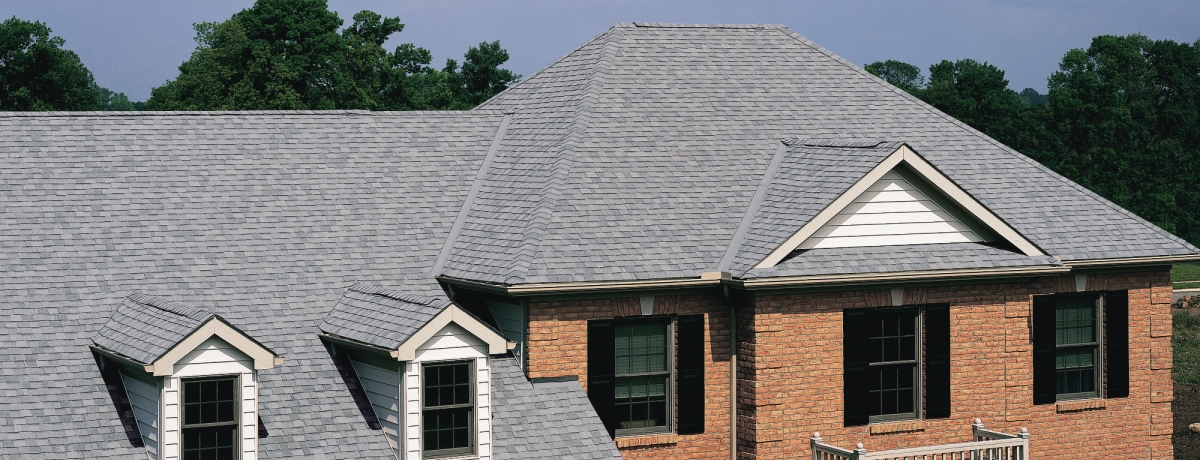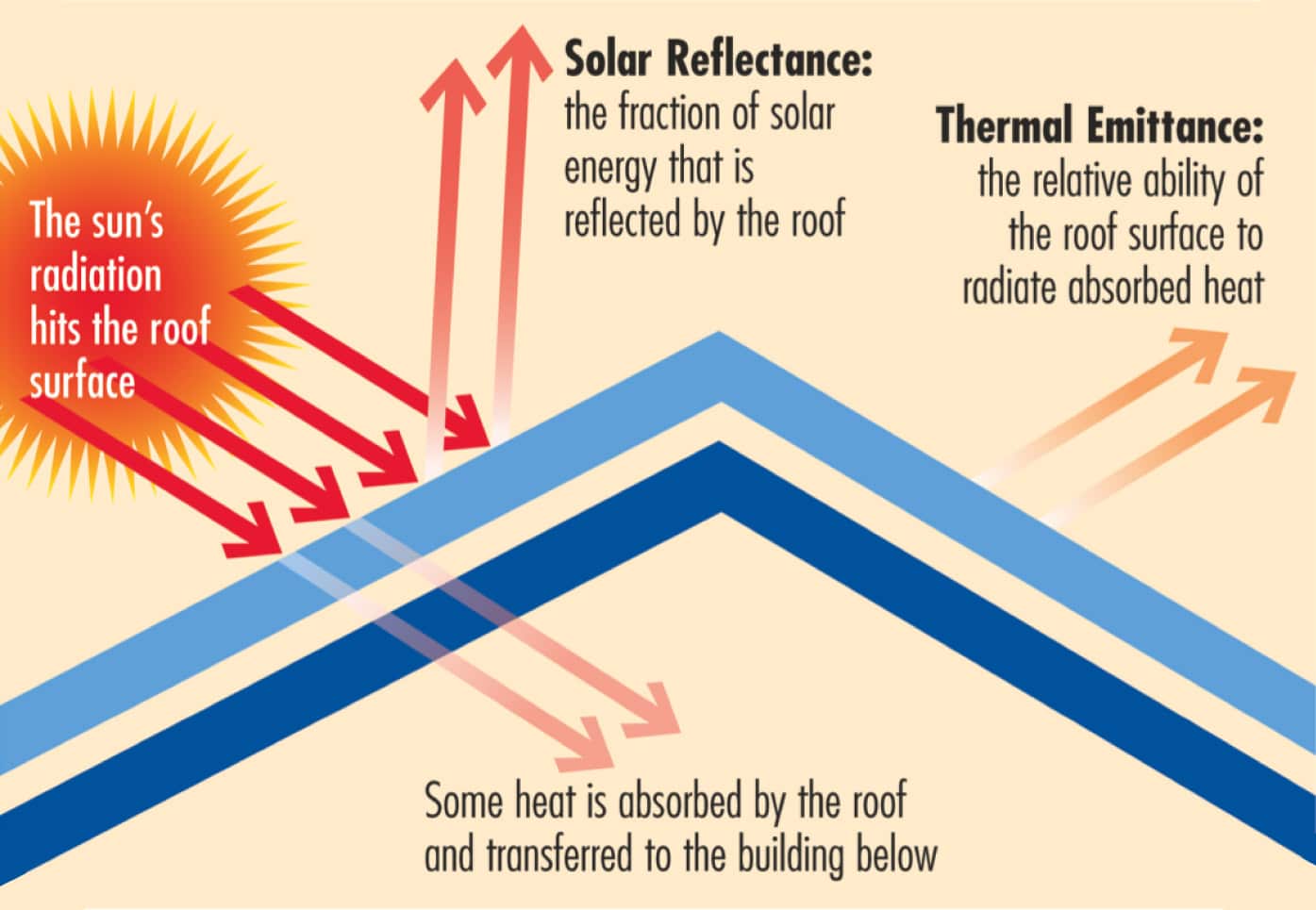Installing Solar Reflective Shingles On Your Rooftop | Solar Reflective Shingles Cost
What are reflective roofing shingles?
When it comes to reflective shingles, these products can be added to any existing or new roof. They have been designed as reflective as well as solar reflective so as to reflect the sun’s heat rays keeping your house cool.
Solar reflective means that they protect from solar heat gain by reflecting sun infrared radiation. It is this reflection of the sun’s rays off the surface of the roof which prevents heat absorption into your home’s interior thus saving you money on energy costs.
How does reflective roofing work?
Solar reflective shingles are made of a special type of material that reflects more infrared radiation than traditional roofing materials. The surface of the solar reflective shingle reflects more heat, which helps to reduce your heating and cooling costs.
If you have an asphalt shingle roof, adding reflective roofing is a good way to add value and beauty to your home while saving money on utility bills. Solar reflective shingles maintain their reflective qualities in all weather conditions and come in different styles that match any style of house or business.
Heat sink for asphalt shingles
The solar reflective shingles work as heat sink for the asphalt shingles. The solar reflective shingles help to dissipate the heat that is built upon the roof. This helps to keep the roof from getting too hot and also helps to extend the life of your roof.

How much more do solar reflective shingles cost?
The most common type is asphalt solar reflective shingles, which usually cost between $2 and $3 per square foot, depending on the manufacturer and vendor.
The cost of solar reflective roof shingles varies depending on the brand and the type of shingle. However, on average, they tend to be more expensive than traditional asphalt shingles.
There are two main factors that will affect the cost of solar reflective roof shingles: the material and the installation. Solar reflective roof shingles are made from a variety of materials, including metal, plastic, asphalt, and rubber.
The other major factor that affects the cost of solar reflective roof shingles is the installation. If you have a professional install them, the cost will be higher than if you do it yourself. However, if you have a complicated roof with a lot of obstacles, it may be worth paying someone to do it for you.
Roofing and the sun
Roofs are typically made of asphalt shingles or clay, concrete, or slate tiles. Many roofs absorb the sun’s rays and turn them into heat radiating out of your roof space. This can make for very hot areas around your home even if the temperature outside isn’t all that warm. Heat build-up is unhealthy as well as uncomfortable so reflective roofing has been designed to reflect more sun rays with solar reflective shingle helping to keep these areas cooler.
Absorbing heat
Shingles that don’t reflect the sun’s rays will absorb the heat and transfer it into your home. This can cause your cooling costs to skyrocket as the temperature inside rises. By installing reflective shingles, you can keep your home cooler and save money on your energy bills.
Solar reflectance

The shingle’s solar reflectivity qualities, otherwise known as the solar reflective index, will determine how much heat is reflected from the shingles. In addition to keeping your home cooler inside, reflective roofing reduces the amount of energy that you need for cooling in warm climates or seasons.
The solar reflective index or SRI measures how well a surface absorbs and reflects radiation from the sun. The higher a material’s SRI is, the more reflective it is toward the sun’s rays.
Thermal emittance
The thermal emittance of a material is its ability to release heat. The lower the thermal emittance, the more a substance will hold on to heat. Solar reflective shingles have a low thermal emittance, meaning they release heat slowly and keep your home cooler in the summer months.
Cool roof rating council
The Cool Roof Rating Council (CRRC) is an independent, non-profit organization that was founded in 2001. CRRC’s mission is to promote the development and use of cool roofing in order to improve energy efficiency, save money, reduce greenhouse gas emissions, and protect the environment.
The CRRC accomplishes its mission by developing accurate and unbiased roofing product ratings, certifying roof products that meet or exceed established cool roofing standards, and educating architects, builders, contractors, consumers, and policy-makers about the benefits of cool roofing.
Owens corning cool roofing shingles
COOL roofing shingles are specially designed with solar-reflecting granules (granules that reflect the sun’s rays) to help decrease the amount of heat transferred into a home. Owens corning cool roofing shingles are a good example of cool roof shingles.
Cool roofing products
Cool roofing products are becoming more popular as people are looking for ways to reduce their energy bills and help the environment. These roofing products are available in a variety of colors and styles to match your home’s look. Cool roof energy systems reflect sunlight and absorb little heat, which can help you save on traditional energy costs while also protecting the environment.
There are a few different types of reflective solar shingles on the market, including:
- Asphalt reflective shingles
- Metal reflective shingles
- Clay tile reflective shingles
Cool asphalt roofing shingles
Cool asphalt roofing shingles are reflective shingles that reflect the sun’s rays, thus minimizing heat transfer into a house.
Advanced solar-reflective materials and manufacturing techniques used in cool asphalt roofing shingles allow them to reflect greater amounts of solar radiation than traditional reflective coatings on shingle roofs. They also resist color fading and peeling longer. The reflective coating further helps lower cooling costs and prolongs the life of an asphalt shingle roof against sun damage.
The reflective material is built directly into the asphalt emulsion which means these reflective systems cannot be scraped or damaged during installation. It’s the most durable reflective roof coating currently available on the market today.
Certainteed
One of the most popular brands of solar reflective shingles is Certainteed. Certainteed offers a variety of solar reflective shingle products that can be used on both residential and commercial buildings. The solar reflective shingles are available in a number of different colors and styles to match the look of your home or building.
The cost of solar reflective shingles varies depending on the brand and style you choose. Certainteed solar reflective shingles tend to be more expensive than traditional asphalt shingles, but they can help you save money on your energy bills in the long run. Solar reflective shingles can also increase the value of your home or property, so they may be a wise investment for homeowners interested in reducing their energy costs and increasing their property value.
Gaf
GAF is another popular brand of solar reflective shingles. GAF solar reflective shingles tend to be less expensive than Certainteed solar reflective shingles, but they may not be as effective at reducing energy costs. However, GAF solar reflective shingles are still a wise investment for homeowners interested in reducing their energy costs and increasing their property value.
Solar reflective roof shingle costs

The cost of solar reflective roof shingles varies depending on the brand and the type of shingle. However, on average, they tend to be more expensive than traditional asphalt shingles.
There are two main factors that will affect the cost of solar reflective roofing: the material and the installation. Solar reflective roofing is made from a variety of materials, including metal, plastic, asphalt, and rubber. The most common type is asphalt solar reflective shingles, which usually cost between $2 and $3 per square foot, depending on the manufacturer and vendor.
The other major factor that affects the cost of reflective solar roof shingles is the installation. If you have a professional install them, the cost will be higher than if you do it yourself. However, if you have a complicated roof with a lot of obstacles, it may be worth paying someone to do it for you.
How to install solar reflective shingles?
The shingles are composed of reflective material, typically aluminum. The reflective surface reflects the sun’s energy back into the atmosphere instead of allowing it to fall on your home. This reduces solar heat gain, which may cause a reduction in air conditioning usage and cooling costs. The reflective material can be applied to asphalt shingles or slate.
Solar reflective shingles installation is not complicated but you should be prepared to spend some time doing it properly. You will need to purchase enough shingles to cover the entire roof surface and also have some extra for repairs.
Start by measuring the length and width of your roof. This will help you determine how much reflective material you will need. Cut the reflective material to size using a utility knife. If you are applying it to asphalt shingles, remove the shingles from the roof and place them on a flat surface. Apply a layer of reflective material to each shingle, making sure to smooth it out. Replace the shingles on the roof and nail them in place. If you are applying it to slate, remove the old slates and replace them with new reflective slates.
FAQs
Is a higher solar reflectance better?
The sun’s reflection on a roof is known as solar reflectance. The most essential feature of roofing products in terms of delivering the greatest energy savings throughout the warmer months is its solar reflectance. The greater the solar reflective value, the more effective the products are in reflecting sunlight and heat away from the structure and lowering roof temperatures. Higher solar reflectance is always better when it comes to reflective roofing products.
Are solar reflective shingles worth it?
The answer is yes – they can significantly reduce cooling costs, especially in warm climates. However, there is a cost associated with installing solar reflective shingles, so you need to weigh up the benefits against the costs to see if they are right for you.
What a reflective shingle can do for a solar-powered home
Reflective asphalt roof shingles offer even greater energy-saving benefits to homeowners with solar photovoltaic panels mounted on their roofs because these reflective asphalt shingles increase the amount of electricity produced by solar panels over traditional dark roofing.
